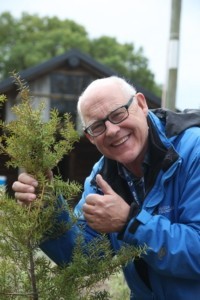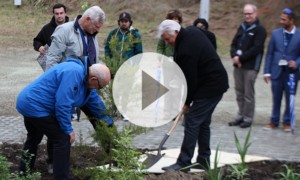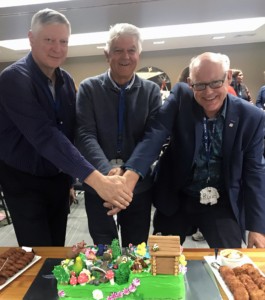On Wednesday, fittingly coinciding with World Environment Day, EIT and the Air New Zealand Environment Trust celebrated the signing of a memorandum of understanding (MoU) expressing their intention to further the Ōtatāra Environmental Education Centre and to work together to push environmental issues.
The Air New Zealand Environment Trustees have agreed to fund part of the development of the Ōtatāra site, located beneath the Ōtatāra Pā, overlooking the Hawke’s Bay campus. The purpose of the centre is to provide an inspirational learning space for use by EIT staff and students, local schools, community groups and businesses.
“The underpinning objective of the centre is to improve awareness of the importance of environmental issues such as the sustainable use of natural resources, biodiversity conservation and promotion of ecological intelligence. The new outdoor learning space will provide us with the opportunity to develop a greater sense of personal responsibility in relation to ensuring a sustainable future for all,” says executive dean for EIT, Professor Natalie Waran.
The Air New Zealand Environment Trust attaches great importance to the collaboration with EIT, says trustee Ruud Kleinpaste. “The Trust has been supporting environmental regeneration, rehabilitation and restoration projects for a long time. By funding the Ōtatāra Environmental Education Centre we are able to get a project off the ground which contributes to the future of New Zealand and engages with communities and schools.”

Air New Zealand Environment Trustee Ruud Kleinpaste planted a tree at the Ōtatāra Environmental Education Centre.
This project is a collaboration between EIT, Air New Zealand Environment Trust, Ngāti Pārau, Enviro Schools, Cape to City, Hawke’s Bay Regional Council, Department of Conservation, Dame Anne Salmond’s ‘Wild Lab’ at Long Bush, and Mangarara Eco-Farm.
Right from the start there has been considerable enthusiasm and plenty of ideas from a variety of community groups, as well as a number of the EIT Schools including; Education and Social Sciences, Primary Industries, Māori Studies and IDEASchool.
“We are thrilled to be a part of this collaboration which is enabling kids and adults alike to fall in love with nature, so that protecting and nurturing nature will become business as usual for them,” says Melissa Brignall-Theyer, engagement lead for Cape to City.
 According to stakeholders, the centre will provide real possibilities for enriching existing educational programmes, developing new programmes, engaging with students, community groups, schools and researchers. It will be a place where people are able to connect with local cultural heritage and contribute to research relating to the Hawke’s Bay’s environment and biodiversity management plan.
According to stakeholders, the centre will provide real possibilities for enriching existing educational programmes, developing new programmes, engaging with students, community groups, schools and researchers. It will be a place where people are able to connect with local cultural heritage and contribute to research relating to the Hawke’s Bay’s environment and biodiversity management plan.
“The site provides the potential for EIT to become nationally recognised for teaching, applied research and community engagement in relation to environmental education, sustainability, community based restoration ecology, social enterprise, artistic exploration, real world experimentation and liberal thinking,” says Professor Waran.


